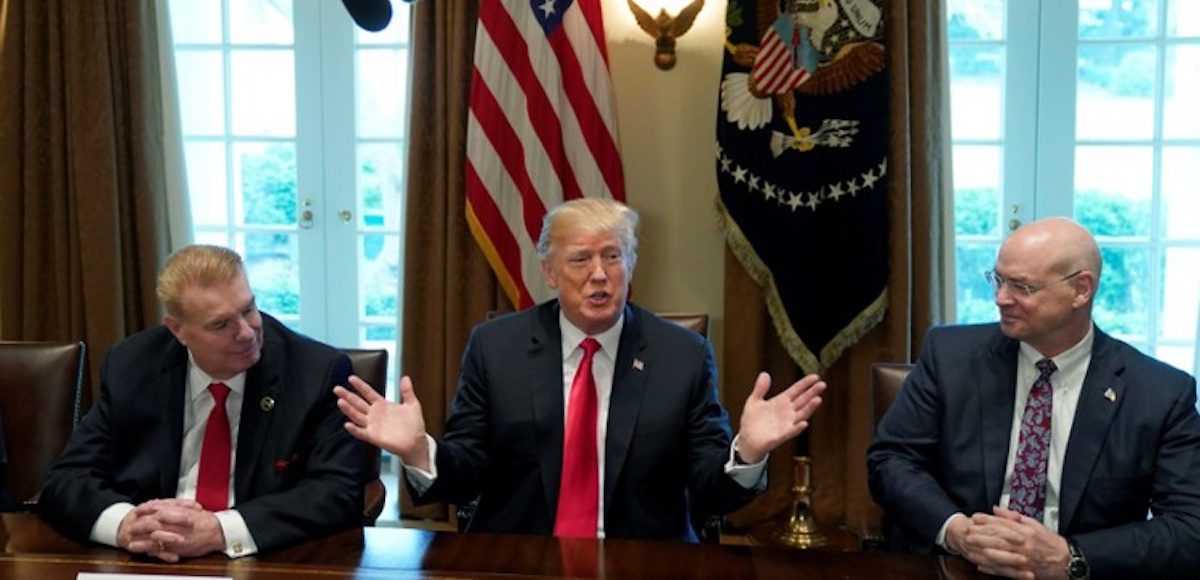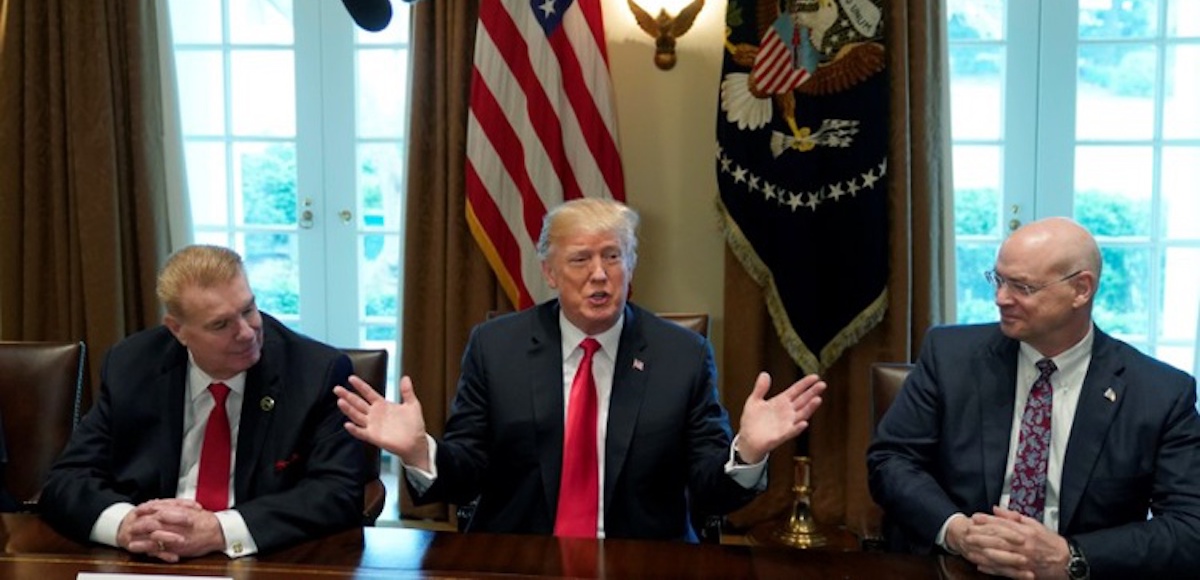

Chairman, CEO and President of Nucor John Ferriola and U.S. Steel CEO Dave Burritt flank U.S. President Donald Trump as he announces his administration will levy new tariffs to product U.S. steel and aluminum manufacturing companies. (Photo: Reuters)
Every time I write a column criticizing Trump’s protectionism, I get pushback. Some of the resistance is from people who genuinely think trade barriers are a good thing, and I routinely respond by asking them to ponder these five charts.
But I also get negative feedback from people who point out that the United States imposed significant import taxes in the 1800s, a period when the United States transitioned from agricultural poverty to middle-class prosperity.
Doesn’t this prove tariffs are pro-growth?
That’s sort of what Brian Domitrovic asserts in a recent column for Forbes.
There is an indisputable chronological correlation between the tariff and phenomenal economic growth. From the late 18th to the early 20th twentieth centuries, the United States steadily developed into the most successful economy in the world.
Brian’s column explores how trade taxes worked in the early history of the United States, but let’s skip to the part that is relevant to today’s discussion.
From 1789 to 1913, the size of the federal government in the economy as a whole averaged about 3%, with variation in time of war. Today, that number is over 20%—a 7-fold increase. State and local government was another 3% back then, and is another 12% today. Where total government was 6% of economic output in the era of the tariff, it is five times larger at over 30% today.
In other words, the real lesson to be learned is not that trade taxes are good for growth, but rather that an economy can prosper if the public sector is very small. And Brian is right that the federal government used to be only a tiny burden in the United States.
Brian even makes the case that government may have stayed small during the 1800s precisely because import taxes were seen as naked cronyism.
The quid pro quo the populace made with the tariff is that Congress and its conspirators in business got their favors, but in turn Congress’s realm, the government, had to stay small. Therefore, the private economy was free… Boundless growth at the hands of entrepreneurs and a talented and ambitious workforce built up year after year as Congress got to curry its petty favors on the condition that government stayed limited in size.
He also explains that politicians back then were very cognizant of the Laffer Curve.
A tariff “for revenue” was one where a rate was set low enough for the good in question to flow into the country in sufficient quantity to bring in increasing receipts to the government. A “prohibitive” tariff was one that was so high, receipts would go up if a rate were lowered. The “Laffer curve” concept was the most discussed theorem in political-economic debates in the United States in the 19th century.
The same principle applies to the income tax today. A modest rate generates lots of revenue, whereas a punitive rate can actually cause a drop in tax receipts.
And, speaking of the income tax, the introduction of that awful levy actually gave Hoover and other politicians the fiscal leeway to impose “prohibitive” tariffs…with very bad results.
After the income tax was put in place in 1913, the tariff shed its revenue purpose and became exclusively a vehicle for cronyism. Therefore it got very high—so high, in 1930, that…the…system was ruined and the result was the Great Depression.
For what it’s worth, I think there were lots of other bad policies from Hoover and Roosevelt that caused – and then exacerbated – the economic damage of the 1930s, so high tariffs don’t deserve all the blame.
But let’s not digress from our main topic of whether trade taxes can be justified.
Brian’s column doesn’t say that tariffs are good, but he does point out that such a system was only capable of financing a very small government. And that meant the private sector had lots of breathing room to operate.
But a “sin of omission” is that he also could have elaborated on the economic benefits of having no income tax. During the 1800s (with the exception of Lincoln’s income tax during the Civil War and an income tax in 1894 that was declared unconstitutional in 1895), there was no personal income tax. And no corporate income tax. And no payroll taxes. Or death tax. Or capital gains tax.
Dean Clancy highlighted these benefits when considering the conditions that would be necessary for him to support trade taxes.

I sort of agree. But I hope Dean would agree to a friendly tweak to his tweet, so that it read “McKinley-size tariffs were a less-worse option because of…”, and then list the polices that actually were good, such as no taxes on income and very small government.
Sadly, I don’t see any practical way of unwinding all the bad policy of the past 100 years.
So the case for trade taxes is very similar to the market-friendly case for a value-added tax. Yes, there is a theoretical argument to replace all income taxes with a VAT, but it’s not realistic.
Likewise, I’m open to the argument that higher tariffs might be acceptable, but only if someone first shows me a practical plan to 1) shrink the federal government back down to what the Founding Fathers envisioned, and 2) get rid of the IRS and all taxes on income.






Deplorable Pepe / March 12, 2018
Love the article, but I think you’re missing a key point on tariffs. Tariffs are needed in trade r… https://t.co/9nCSSIpgEq
/